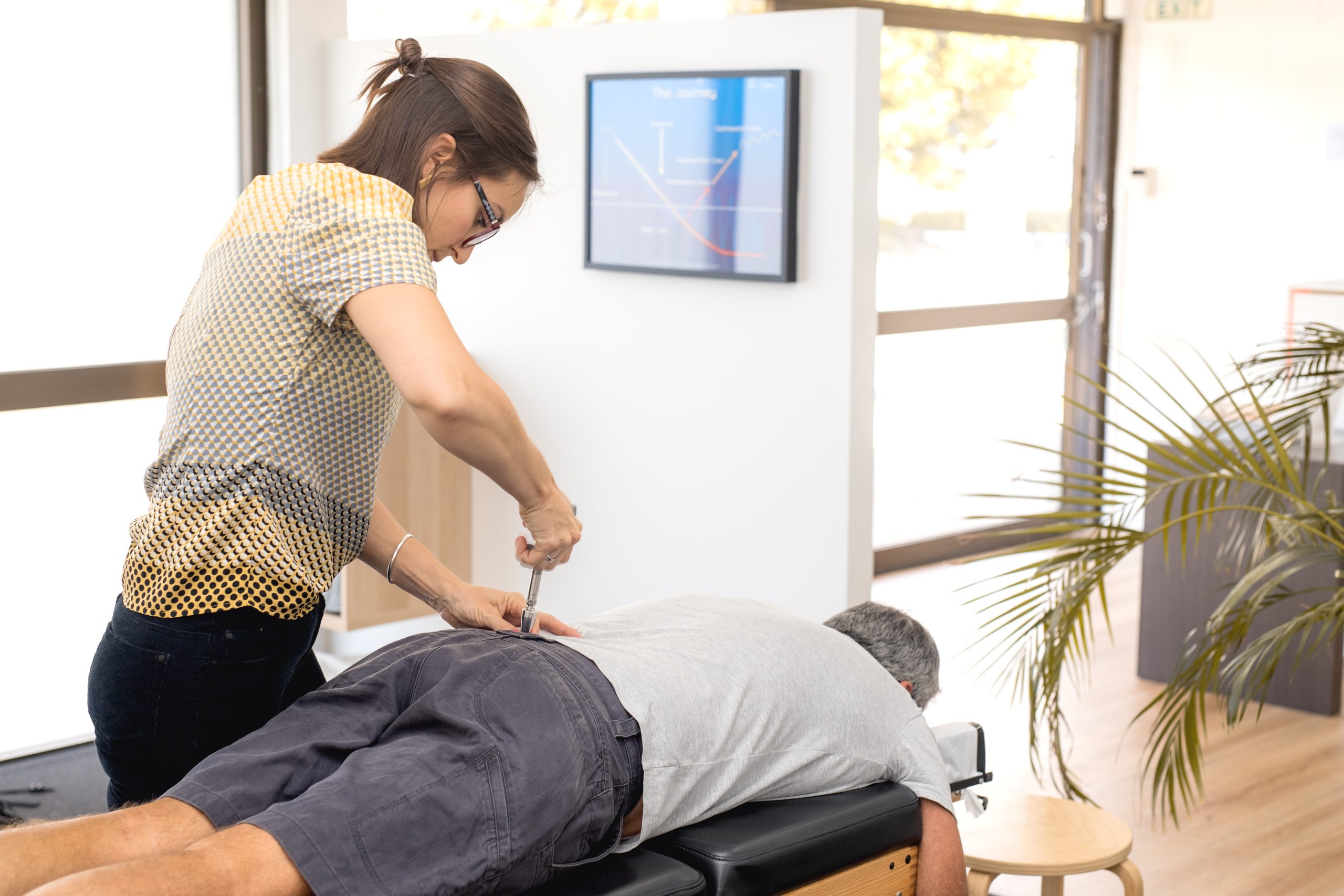If you’ve been struggling with chronic back pain, radiating nerve discomfort, or limited mobility, you may be wondering if spinal decompression therapy is right for you. This non-invasive treatment is growing in popularity as a solution for various spine-related conditions, especially among people seeking alternatives to surgery or long-term medication. But who is spinal decompression for, and more importantly, who benefits most?
In this in-depth guide, we’ll explore the conditions spinal decompression addresses, ideal candidate profiles, and how to determine if it’s the right choice for your unique needs. We’ll also highlight real-world examples, address frequently asked questions, and explain how spinal decompression can be especially effective for people with neuropathy caused by nerve compression.
What Is Spinal Decompression Therapy?
Spinal decompression therapy is a non-surgical treatment designed to relieve pressure on spinal discs and nerves. It typically involves a motorized spinal decompression table that gently stretches the spine, creating negative pressure that:
- Retracts herniated or bulging disc material
- Increases blood flow and nutrient exchange
- Reduces inflammation and nerve compression
For patients who qualify, it offers a pain-free, drug-free path toward long-term relief and improved spinal function.
Conditions That Benefit from Spinal Decompression
1. Herniated or Bulging Discs
What it is:
Spinal discs act as cushions between your vertebrae. When a disc becomes damaged, due to injury, aging, or stress, it may bulge outward or rupture, resulting in a herniated disc. The displaced disc material can press on nearby nerves, triggering pain, tingling, numbness, or muscle weakness.
How decompression helps:
Spinal decompression therapy gently stretches the spine, creating negative pressure within the affected disc. This allows the herniated portion to retract, reducing pressure on the nerve and restoring proper disc alignment. Over time, this can lead to significant pain relief and functional improvement.
2. Degenerative Disc Disease
What it is:
As we age, spinal discs can naturally lose water content and shrink, a process called degeneration. When discs become thinner and less flexible, they provide less cushioning, leading to joint stress, inflammation, and nerve irritation.
How decompression helps:
Decompression improves hydration and nutrient exchange within the disc space. By increasing circulation and relieving pressure, it helps slow down degeneration, improve disc health, and reduce pain caused by disc collapse or instability.
3. Sciatica
What it is:
Sciatica refers to radiating nerve pain that travels from the lower back down one or both legs. It’s caused when the sciatic nerve is compressed or irritated, often due to disc herniation or spinal misalignment.
How decompression helps:
Spinal decompression reduces pressure on the sciatic nerve at its origin in the lower spine. This helps relieve inflammation and nerve compression, decreasing the frequency and intensity of radiating pain, numbness, or weakness in the legs.
4. Spinal Stenosis
What it is:
Spinal stenosis is a narrowing of the spinal canal, often caused by bone spurs, thickened ligaments, or disc degeneration. This tight space can compress the spinal cord or nerve roots, causing pain, cramping, and balance issues.
How decompression helps:
While surgical intervention may be needed for severe cases, mild to moderate spinal stenosis often responds well to non-surgical decompression. By stretching the spine, decompression opens the spinal canal and relieves pressure on the compressed nerves, reducing symptoms like leg pain, numbness, or heaviness.
5. Facet Syndrome
What it is:
Facet joints are the small stabilizing joints at the back of your spine that allow for motion and flexibility. Overuse, arthritis, or injury can inflame these joints, leading to localized pain, stiffness, and reduced mobility, especially in the neck or lower back.
How decompression helps:
By reducing compressive load on the spinal column, decompression therapy decreases the stress on inflamed facet joints. As tension is relieved, surrounding tissues relax, and symptoms like sharp or localized joint pain often improve.
6. Neuropathy Due to Nerve Compression
What it is:
Neuropathy is a condition involving damaged or dysfunctional nerves, often presenting as tingling, burning, numbness, or shooting pain, especially in the hands, feet, or legs. When caused by spinal nerve root compression, this form of neuropathy is mechanical in nature and can be directly addressed at the source.
How decompression helps:
Spinal decompression for neuropathy works by relieving the pinched or compressed nerve root at its origin, often in the cervical or lumbar spine. This improves nerve conductivity, blood flow, and healing, reducing symptoms over time and improving overall nerve function.
Spinal Decompression for Neuropathy: A Closer Look
Peripheral neuropathy refers to damage, dysfunction, or irritation of nerves located outside the brain and spinal cord, typically in the arms, hands, legs, or feet. This condition can present as:
- Tingling or “pins and needles” sensation
- Burning or shooting pain
- Numbness or loss of sensation
- Muscle weakness or coordination problems
While diabetes, autoimmune conditions, infections, and certain medications are common causes of neuropathy, many people don’t realize that spinal nerve compression is also a major, and often treatable, trigger.
When Neuropathy Starts in the Spine
When the nerve roots in the spine become compressed, whether by herniated discs, spinal stenosis, or degenerative disc disease, it can disrupt nerve signaling, resulting in radiculopathy or neuropathy symptoms that radiate into the limbs.
For example:
- A compressed lumbar nerve may cause numbness or burning in the legs and feet
- A compressed cervical nerve may lead to tingling in the arms or hands
This type of neuropathy is mechanical in nature, and one of the few types that can improve significantly with physical correction, such as non-surgical spinal decompression therapy.
How Decompression Helps Neuropathy
Spinal decompression therapy offers a non-invasive way to relieve the mechanical cause of neuropathy symptoms. By gently stretching the spine in cycles, the therapy addresses both structural and functional aspects of nerve compression.
- Relieves pressure on affected spinal nerves: Negative intradiscal pressure helps retract bulging disc material, creating space around pinched nerves.
- Improves circulation to the damaged area: Increased blood and nutrient flow helps inflamed nerves heal and function more efficiently.
- Restores nerve signaling: Reduces disruption in electrical impulses, leading to fewer sensations of burning, tingling, or numbness.
- Prevents further nerve deterioration: By addressing the root cause early, spinal decompression may slow or prevent chronic neuropathic damage.
Ideal Candidates: Who Is Spinal Decompression For?
Not all neuropathy is the same, and spinal decompression is best suited for patients whose symptoms originate from mechanical compression in the spine.
Good Candidates
- People with chronic lower back or neck pain
- Those with disc-related conditions (herniation, degeneration)
- Individuals with neuropathy due to nerve root compression
- Patients with sciatica or radiculopathy
- Adults seeking a non-surgical, drug-free alternative
- People who have not responded to physical therapy or chiropractic care alone
Not Ideal Candidates
- Pregnant individuals
- People with spinal tumors, fractures, or infections
- Patients with severe osteoporosis
- Individuals with previous spinal fusion surgery
- Those with implanted hardware in the spine
A comprehensive screening process, including physical examination and diagnostic imaging (MRI, CT scan, or X-ray), is critical to determine eligibility and ensure safety.
What to Expect During Treatment
If you’re a good candidate for decompression therapy, your provider will develop a custom plan tailored to your condition. Here’s what a typical session looks like:
- Sessions last 20–45 minutes
- A padded harness is placed around your hips or upper body
- The spinal decompression machine creates cycles of gentle stretching and relaxing
- Most patients require 15–30 sessions over 4–6 weeks
- The process is painless, many patients find it relaxing
Evidence & Clinical Support
Clinical studies continue to validate the effectiveness of spinal decompression therapy:
- A study published in the American Journal of Pain Management found 71% of patients showed significant improvement in pain and function after non-surgical spinal decompression.
- MRI evidence has shown increased disc height and retraction of herniated material in patients undergoing therapy.
- Patient surveys consistently report improvements in mobility, reduced reliance on pain medications, and lower symptom recurrence rates.
Frequently Asked Questions
Q: How do I know if spinal decompression is right for me?
A: The best way to determine if you’re a candidate is through a clinical evaluation that includes a health history review, physical examination, and imaging (like an X-ray or MRI). In general, spinal decompression may be a great fit if you:
- Experience chronic back or neck pain
- Have been diagnosed with a herniated or bulging disc, spinal stenosis, or degenerative disc disease
- Are dealing with sciatica or nerve-related symptoms (e.g., tingling, burning, or numbness in the limbs)
- Prefer to avoid surgery or long-term medication use
- Have not responded well to traditional treatments like physical therapy or chiropractic care alone
It’s especially recommended if your symptoms worsen with prolonged sitting or standing and improve when lying down, an indication of nerve root compression.
Q: Is spinal decompression safe for older adults?
A: Yes, spinal decompression is considered safe for many older adults, especially when overseen by a trained provider. In fact, seniors often benefit the most, as age-related disc degeneration and spinal stenosis are common contributors to pain and nerve compression in this group.
However, safety depends on your overall spinal health. Contraindications like severe osteoporosis, spinal instability, or previous fusion surgery may disqualify some individuals.
A thorough assessment by a spine specialist will help determine if decompression is both safe and effective for your unique condition.
Q: Can spinal decompression cure neuropathy?
A: That depends on the cause of your neuropathy. If your symptoms, such as tingling, burning, or numbness, stem from mechanical nerve compression in the spine, spinal decompression therapy can dramatically improve or even eliminate symptoms over time.
However, if your neuropathy is caused by systemic conditions like diabetes, chemotherapy, or autoimmune disease, decompression may have limited benefit. Still, many patients with mixed causes of neuropathy find that relieving spinal pressure reduces overall nerve irritation and enhances quality of life.
How to Get Started: Finding Spinal Decompression Near Me
If you’re ready to explore your options, begin by searching for spinal decompression near me to find a local clinic. Look for providers that offer:
- Free consultations
- Custom treatment plans
- Access to complementary therapies (chiropractic, massage, PT)
- Experience treating neuropathy and disc conditions
Conclusion: Are You the Right Candidate?
Spinal decompression therapy isn’t a one-size-fits-all solution, but for the right patients, it can be a life-changing treatment that restores mobility, reduces pain, and alleviates nerve-related symptoms. Those with neuropathy caused by spinal nerve compression, herniated discs, or sciatica may see significant improvements without surgery or long-term medication use.




